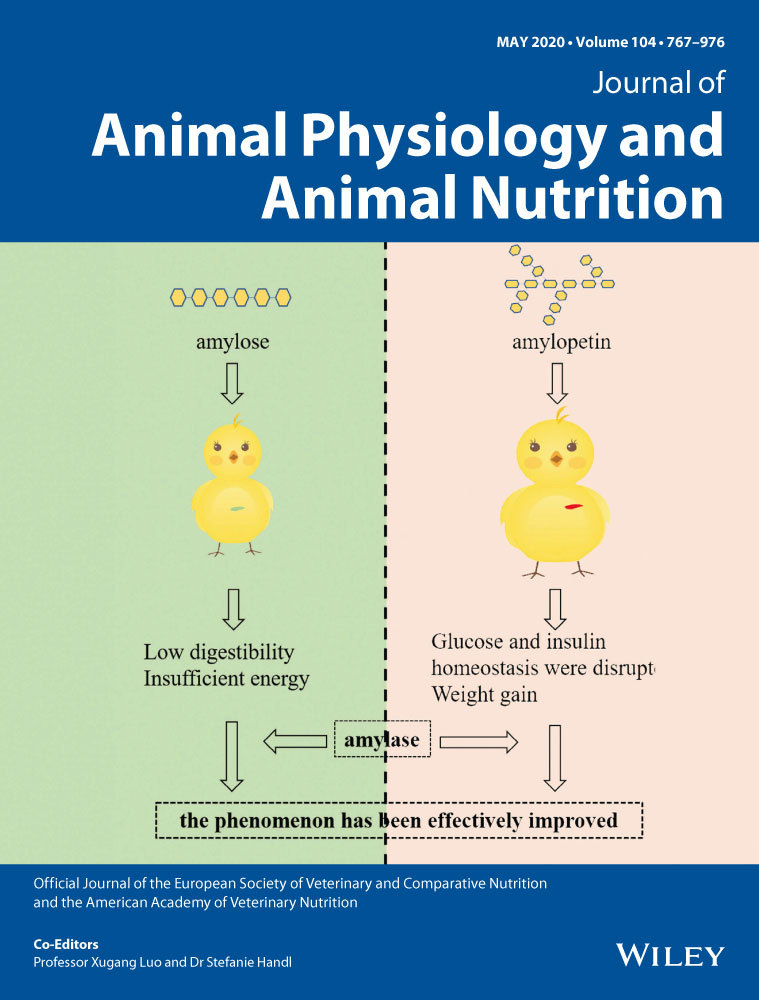Ver ítem
- xmlui.general.dspace_homeCentros Regionales y EEAsCentro Regional Patagonia NorteEEA BarilocheArtículos científicosxmlui.ArtifactBrowser.ItemViewer.trail
- Inicio
- Centros Regionales y EEAs
- Centro Regional Patagonia Norte
- EEA Bariloche
- Artículos científicos
- Ver ítem
Dietary nitrate and presence of protozoa increase nitrate and nitrite reduction in the rumen of sheep
Resumen
Nitrate (NO−3) supplementation is an effective methane (CH4) mitigation strategy for ruminants but may produce nitrite (NO−2) toxicity. It has been reported that rumen protozoa have greater ability for NO−3 and NO−2 reduction than bacteria. It was hypothesised
that the absence of ruminal protozoa in sheep may lead to higher NO−2 accumulation in the rumen and a higher blood methaemoglobin (MetHb) concentration.
An in vivo experiment was conducted with
[ver mas...]
Nitrate (NO−3) supplementation is an effective methane (CH4) mitigation strategy for ruminants but may produce nitrite (NO−2) toxicity. It has been reported that rumen protozoa have greater ability for NO−3 and NO−2 reduction than bacteria. It was hypothesised
that the absence of ruminal protozoa in sheep may lead to higher NO−2 accumulation in the rumen and a higher blood methaemoglobin (MetHb) concentration.
An in vivo experiment was conducted with defaunated (DEF) and faunated (FAU) sheep supplemented with 1.8% NO−3 in DM. The effects of rumen protozoa on concentrations of plasma and ruminal NO−3 and NO−2, blood MetHb, ruminal volatile fatty acid (VFA) and ruminal ammonia (NH3) were investigated. Subsequently, two in vitro experiments were conducted to determine the contribution of protozoa to NO−3 and NO−2 reduction rates in DEF and FAU whole rumen digesta (WRD) and its liquid (LIQ) and solid (SOL) fractions, incubated alone (CON), with the addition of NO−3 or with the addition of NO−2. The results from the in vivo experiment showed no differences in total VFA concentrations, although ruminal NH3 was greater (p < .01) in FAU sheep.
Ruminal NO−3, NO−2 and plasma NO−2 concentrations tended to increase (p < .10) 1.5 hr after feeding in FAU relative to DEF sheep. In vitro results showed that NO−3 reduction to NH3 was stimulated (p < .01) by incoming NO−3 in both DEF and FAU relative to CON digesta. However, adding NO−3 increased (p < .05) the rate of NO−2 accumulation in the SOL fraction of DEF relative to both fractions of FAU digesta. Results observed in vivo and in vitro suggest that NO−3 and NO−2 are more rapidly metabolised in the presence of rumen protozoa. Defaunated sheep may have an increased risk of NO−2 poisoning due to NO−2 accumulation in the rumen.
[Cerrar]

Autor
Villar, Maria Laura;
Hegarty, Roger Stephen;
Clay, Jonathon William;
Smith, Katherine Anne;
Godwin, Ian Robert;
Nolan, John Vivian;
Fuente
Journal of Animal Physiology and Animal Nutrition’s : 1-14 (Abril 2020)
Fecha
2020-04
Editorial
Wiley
ISSN
1439-0396
Formato
pdf
Tipo de documento
artículo
Palabras Claves
Derechos de acceso
Restringido
 Excepto donde se diga explicitamente, este item se publica bajo la siguiente descripción: Creative Commons Attribution-NonCommercial-ShareAlike 2.5 Unported (CC BY-NC-SA 2.5)
Excepto donde se diga explicitamente, este item se publica bajo la siguiente descripción: Creative Commons Attribution-NonCommercial-ShareAlike 2.5 Unported (CC BY-NC-SA 2.5)

